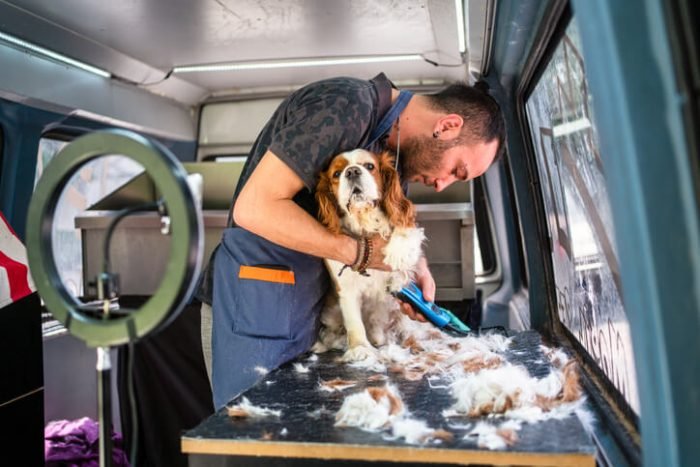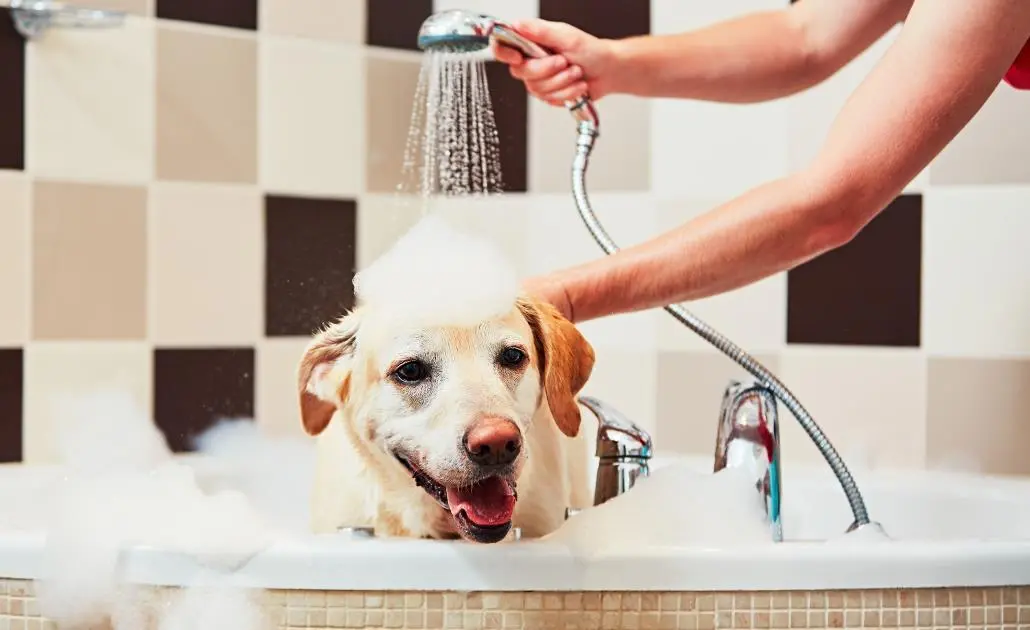Introduction: Bathe Your Pet
Since grooming is a vital component for your pet’s overall health, it is crucial that it is understood that not all pets require the same level of washing. The extent and form of washing greatly depend on such factors as a breed, activity rate, or skin condition of an animal. Dogs, cats or other exotic pets have their own natural instincts on how they groom themselves and hence one has no to decide on timed or frequent bathing of them.
This not only makes your pet look clean and smell good, but also reduces rubbing against furniture or people which may cause dermatitis or rashes on your pet’s skin; and helps to remove any allergens/irritants that your pet may have come into contact with as these may be stuck to their fur.
Factors That Influence Bathing Frequency
Different breed, age, seasons, and even the kind of food your pet takes will determine the time it will take for the next bath. For instance, a dog that likes to go out for hikes or who always ends up rolling in the mud will need more washing that a dog who mostly stays within doors. Pets with skin conditions or allergies might also be bathed with medicated solutions for which they have been advised by a vet.
Other changes in bathing your pets may also occur due to changes in the nature seasonal changes for instance, pets from fluffy heavily shedding may need more frequent baths when they are shedding.
Furthermore, the breed of your pet and the kind of fur, if it is short fur, long fur, curly fur or if they are double coated animals the regularity with which your pet will be taken for a wash will be determined by the frequency of shedding of their furs. Considering these factors prevent you from over bathing or under bathing your furry friend to ensure they are well cleaned.
Bathing Guidelines for Dogs
Dogs should be bathed about once in four to six weeks, depending on the type of dog and how active they are, as well as any existing medical problems. Some Basset Hounds have an oily coat, or skin in this case, so it may need washing more often to avoid smell and skin problems. On the other hand, the dogs that have non-absorbent coats, for examples Labradors, should not be bathed very often since this will wash off layer of oils that the coat of the dog has.
It’s important to use only a dog specific shampoo in order to maintain healthy skin and coat for your furry friends. If your dog has skin issues or skin sensitivities always seek advice from your vet regarding the best hypoallergenic or medicated shampoo. This way, they don’t have to take a bath as often and this is because hair-brushing in between bath times causes the coat to remain clean as well as untangled.
Bathing Guidelines for Cats
Cats are also clean animals because they always take a lot of time grooming themselves. Thus, most cats seldom need a bath, and for good reason. But there are conditions that require that the cat emulates the wild ones such as the Sphynx that requires bathing every week in order remove oil accumulated on the skin. However, cats with longer fur like Persian cats also require a good bath once in a while in order to deal with issues such as matted and shedding coat.
Sometimes a cat will get covered in some sticky substance or poison or develop a health problem that requires them to be bathed. When bathing your cat, always ensure that you use a cat’s shampoo, or preferably any cat’s product, on your kitten and also ensure the water is not hot since this will make the kitten stressed up.
Should Exotic Pets Be Bathed in the Same Way As Common Pets?
Small mammals including rabbits and guinea pigs, reptiles, birds, and other similar animals are a lot different for grooming and bathing compared to cats and dogs. A good number of these animals are able to groom themselves and only require to be washed very, very, very seldom. For example, birds need the ability to mist, or water dish available to help bathe them, or small dish to allow them to soak, while reptiles should occasional soaks to help them shed.
Bathing your exotic pet too often can interfere with its physiology and natural coat, or simply put too much stress on it: Etinger 91 The best course of action is to learn all you can about your specific exotic pet. For other bathing needs you have, you can seek advice from a vet who specializes in exotic animals.
How Skin and Coat Type Affect Bathing Frequency
Bathing your pet depends on your pet’s skin and coat type and might need to be done less or more frequently. Animals are likely to have either dry skin or oily skin and depending on this they may not need as frequent baths as an animal with oily skin.
Just like the Huskies with thick or even double coats, these dogs do not need frequent baths, but regular combing. On the other hand, pets with a short coat would, therefore, mean that less frequency of baths and in general would need less grooming. Due to this, one is in a position to understand the care needs of their pets, comfortably clean their coat still retaining its natural skin balance.
Seasonal Considerations for Pet Bathing
Pet owners need to realize that bathing habits change with the onset of the various seasons. When it is winter time, it is wise only to bath once a day so as not to completely remove all oil from the skin hence experience harsh effects of loose skin. It is advisable to make sure that your pet is dried completely after a bath to avoid instance of the chills. During summer, animals need to be bathed more often to wash off sweat, dust and other things likely to have picked from the outdoors.
Both spring and fall are considered shedding seasons, therefore daily grooming, including brushing and, less frequently, bathing are recommended to minimize the amount of loose hair as well as keep the amount of hair left on furniture and carpet to a minimum. Switching your pet’s bathing regime based on seasons is very important in order to detect his or her posture at all times.
Common Mistakes to Avoid When Bathing Your Pet
In fact, many people who give their pets a bath are guilty of several mistakes with no idea that they are actually doing it. Sometimes, using human shampoo for example can cause imbalance in skin pH of your pet and as result lead to skin irritation. Two mistakes that many make are bathing too frequently and this is detrimental as it eliminates the skin oils making it dry and flaky.
Poor washing with water can cause hair products to still remain on the hair thus cause itchiness or skin infection. Further, some pets develop stress during the bath time because of forceful and hurried behavior towards them. Understanding that preparation of appropriate tools, usage of pet shampoONG and other products, and establishing proper atmosphere all help a lot in pet’s bath.
Signs That Your Pet Needs a Bath
As much as grooming is recommended daily, some symptoms will make you realize that it is time for a bath. In general, if you can smell your pet, notice dust in their hair, or if their fur is oily, it’s high time you gave them a bath. Inflammation of the skin like redness or over scratching might also require the dog to be bathed with either a mild or a medicated shampoo.
Also, if your pet had been chasing the mud, allergens or any other dangerous products during the outdoor activities, than bath can help with skin problems. Being keen with these signs check that your pet gets their hygiene needs met in good time.
Choosing the Right Products for Your Pet’s Bath
Choosing of the appropriate bathing products is important especially when it comes to health of the skin and fur of your pet. Pet shampoos and conditioners should be used all the time because human products are unsuitable for their skin.
For dogs with any skin issues or allergies consult with your vet and try to find hypoallergenic or medicated collars. Some foods such as oatmeal or aloe vera on the skin can help pets with sensitive skin. Also, having the right tools like brushes and towel to help in bathing makes it easier and faster reduces on the time spent on this process.
How to Make Bath Time Stress-Free for Your Pet
However, majority of pets have a negative attitude towards bath time, but this seems to be a habit that can be eased. To practice the steps first, try to find a place free of loud noises or people, or make lying down or sitting in a quiet area. This should be done using water that is not hot after which you should speak to your pet gently. This will help distract the pet during the bath or as reward them with treats or toys to chew on.
For the anxious pets, one may use a non slip mat to make the pet comfortable. Indoctrination or regular bath in a tub also goes a long way in making the pet comfortable as it grows from a young age. Practical action for the correction of this attitude of the child entails ensuring the child has a positive attitude towards bathing and this can only be achieved through patience and lots of encouragement.
When to Consult a Vet About Your Pet’s Hygiene
If the skin looks infected, if your dog is scratching constantly or if he has an odor that is not eliminated by washing, you should seek advice from a veterinarian. Sometimes skin infections, allergies or other ailments may present a surface picture of hygiene issues and should therefore be taken to a doctor.
Moreover, if the pet has certain behavior during baths such as anxiety, the vet needs to help solve such problems. Visits should be scheduled with your veterinarian to monitor pet hygiene as well as pet’s general health.





